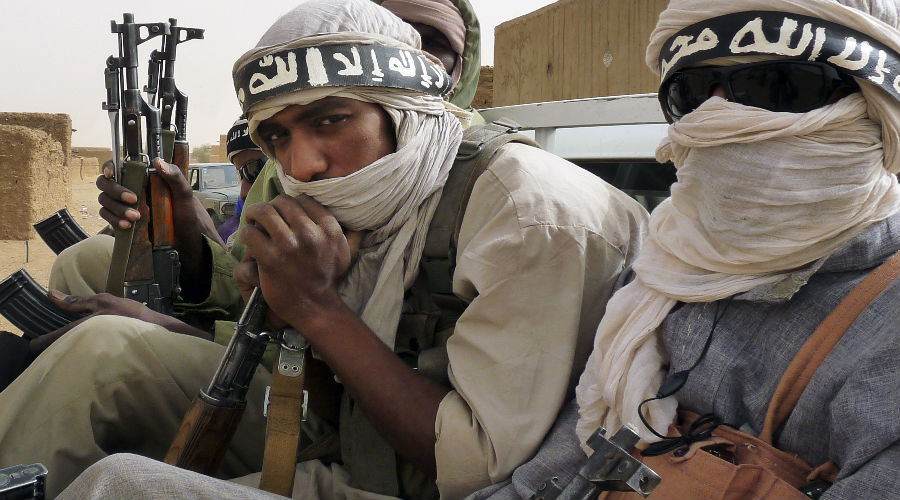Al-Qaeda in the Islamic Maghreb (AQIM) recently initiated organizational and operational changes posing multiple threats to the Sahel-Saharan States. For one, the organization, according to several views, seeks to fill the vacuum left by ISIS’ diminishing influence and activity. However, other views play down this factor and have it that it is likely that the primary goal that AQIM seeks to achieve through such changes is to avoid ISIS’ fate, given that some al-Qaeda’s leaders expect that their organization is the next target after ISIS.
This views prompted world powers to take immediate measures to contain, and take advantage of these changes to serve their own interests. In the United States, President Donald Trump on September 24, 2017, issued a new proclamation vetting capabilities and processes for detecting attempted entry into the United States by terrorist or other public-safety threats. The new travel restrictions were imposed on certain foreigners from eight countries including Chad in which the proclamation says several terrorist groups, and AQIM in particular, are active.
In the same context, Germany’s defense ministry supplied equipment worth 5 million euros to Niger to help it combat terrorism and cross-border militancy. Additionally, France has always backed the efforts of the states of Sahara and Sahel region to create a 5000-strong joint force to combat al-Qaeda-affiliated groups operating in the region.
Multiple Features
The key new changes adopted recently by AQIM can be summarized as follows:
1- Geographical Spread. Over the past two years, the organization worked hard to expand its territory and support its influence in more than one region pursuing organizational and operational tactics and using its own groups spreading in the Sahel and Sahara states as well as allied organizations. That is because the organization’s activity was no longer limited to its traditional areas of influence areas such as southern Algeria and northern Mali, but has expanded into other states such as Niger, Burkina Faso and Nigeria. Niger has become a new source for recruits. In Burkina Faso, AQIM’ franchise Ansarul Islam, which is led by Malam Ibrahim Dicko, the country’s enemy number one, is now active. In Nigeria, AQIM has allied with a group led by Abubakar Shekau, who broke away from Boko Haram and allied again with al-Qaeda due to a dispute over leadership.
2- Emergence of Non-traditional Leaders. Some figures who were not widely known within AQIM and generally all terrorist organizations, assumed leadership positions in the organization, allied groups and even those embracing similar ideology. For instance, AQIM backed the selection of Iyad Ag Ghaly, the former leader of Ansar Dine, as leader of the Nusrat al-Islam wal Muslimeen” (Support of Islam and Muslims), established in March 2017 as an al-Qaeda umbrella for the organization’s allies operating in the region. The move was justified by some of the organization’s commanders as a bid to show more flexibility in dealing with developments taking place in the region while avoiding what it calls and ideological and organizational stagnation impacting its activity in the past period.
3- Expansion of Alliances with other Organizations. AQIM was keen to expand alliance with terrorist groups operating in the Sahel and Sahara states to expand its presence to new hot zones. Several views have it that the organization’s bid to establish an “al-Qaeda crescent” drove it to support the creation of a new alliance between the Macina Liberation Movement, Ansar Dine, the Sahara Emirate and the Al Mourabitoun (The Sentinels) group, proclaimed in March 2017.
4- Carrying out Cross-border Operations. AQIM deliberately moved its operations to a number of Sahel and Sahara states to expand from southern Algeria and northern Mali. The expansion was manifested by terrorist attacks in the five states Mali, Niger, Chad, Burkina Faso and Mauritania. On August 13, 2017, it attacked the Aziz Istanbul restaurant in Ouagadougou, Burkina Faso, killing 18 people including 8 foreigners. One day later, on Augut 14, it attacked UN troops in Timbuktu, Mali, killing 7 people, including a UN soldier, five Malian security guards and one civilian. Moreover, several reports noted that through these attacks, the organization seeks to support its expansion into Central African countries in the coming period.
5- Expansion of Supporter Base. Al-Qaeda’s alliances in the Sahel and Sahara region were not confined to terrorist groups. The organization built up a network of relations with tribal groups that have wide influence in targeted areas and have played a significant role supporting it through logistical assistance to its fighters. These tribal groups helped transporting these fighters from southern Algeria and northern Mali into areas where the organization set up camps to avoid strikes from counter-terrorism forces.
Potential Hurdles
However, this does not negate the fact that AQIM’s bid to expand to new areas is facing no easy obstacles. The organization’s terrorist attacks carried out in collaboration with allied groups forced involved states in the region to elevate their security coordination to fend off repercussions on their security and stability.
Moreover, rival organizations, and ISIS in particular, continue to maintain their ability to recruit more extremists in this region and use their traditional sources of funding, which can reduce AQIM’s ability to exploit their retreat to entrench its own influence in their former areas of control. Eventually, overall, this situation suggests that this region is entering a new stage of conflict between major terrorist organizations, ISIS and al-Qaeda in particular.


